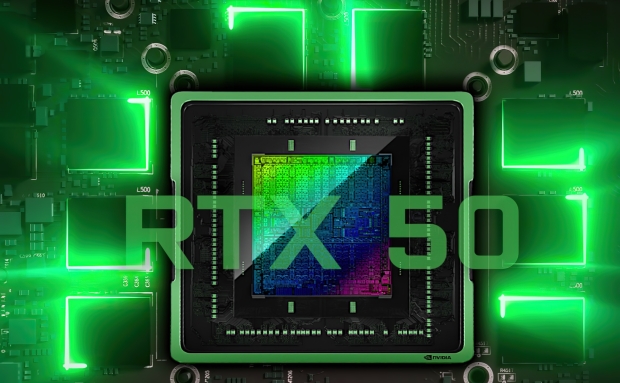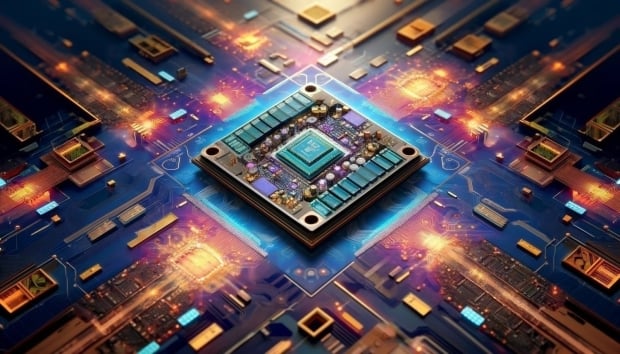NVIDIA’s next-gen GeForce RTX 5080 is expected to feature the fastest GDDR7 memory modules available, at 32Gbps, giving its 16GB of GDDR7 up to a crazy 1TB/sec of memory bandwidth.

VIEW GALLERY – 3 IMAGES
In previous rumors we heard similar: that NVIDIA’s upcoming GeForce RTX 5080 would feature 16GB of GDDR7 but we didn’t know if it was 28Gbps or 32Gbps GDDR7 modules. But now, our friends over at Wccftech have talked with their sources that have confirmed the GeForce RTX 5080 will feature 16GB of GDDR7 at 32Gbps, which is 4Gbps faster than the 28Gbps GDDR7 modules on the flagship GeForce RTX 5090.
This means that the GeForce RTX 5080 with 16GB of GDDR7 at 32Gbps on a 256-bit memory bus will spit out a rather hefty 1TB/sec of memory bandwidth, matching the previous-gen flagship GeForce RTX 4090. It’s also a gigantic leap over the RTX 4080 which features 16GB of GDDR6X at 23Gbps (RTX 4080 = 23Gbps, RTX 5080 = 32Gbps).
Inside, NVIDIA’s new GeForce RTX 5080 will have the GB203-400-A1 GPU with 10,752 CUDA cores (51% less than the 20K+ on the RTX 5090. We can expect the new RTX 5080 to match RTX 4090 performance, but I bet with DLSS 4 enabled and the upgraded Blackwell GPU architecture, the new RTX 5080 will surpass the RTX 4080 and RTX 4080 SUPER with its hands tied behind its back, and the RTX 4090 by a big margin with DLSS 4 enabled.
NVIDIA GeForce RTX 5080 details so far:
10,000+ CUDA cores: NVIDIA’s new GeForce RTX 5080 with 10,752 CUDA cores means we’ve got an upgrade over the 9728 CUDA cores inside of the RTX 4080. Once again, they’re newer Blackwell GPU cores over the Ada Lovelace GPU architecture inside of the RTX 40 series GPUs.
RTX 5080 16GB + RTX 5080 24GB: We’ve also heard rumors that NVIDIA will offer the RTX 5080 with 16GB GDDR7, but have a newer upgraded RTX 5080 with 24GB of GDDR7 memory leaving the RTX 5090 with its monster 32GB GDDR7 memory at the top.
16GB GDDR7 @ 32Gbps: We don’t have more VRAM on the RTX 5080, with both the RTX 4080 and RTX 5080 having 16GB of VRAM. The big upgrade here is NVIDIA is using ultra-fast, next-gen GDDR7 memory… so, same 16GB, but radically faster (and cooler).
Up to 1.0TB/sec memory bandwidth: The RTX 4080 has 716GB/sec of memory bandwidth, so with somewhere between 896GB/sec and 1.0TB/sec of memory bandwidth from the RTX 4080 is going to offer huge performance improvements at 1440p and 4K.
400W of power: Not a big upgrade in power consumption on the RTX 5080 which is rumored with a 400W TDP, another 80W more than the RTX 4080 which had a 320W rated TDP (again, custom AIB models are on the market with higher power consumption, the same applies to the new RTX 5080 in the months ahead).
4K performance: NVIDIA’s next-generation ultimate gaming GPU in the GeForce RTX 5090 should have 50-70% more performance across the board compared to the RTX 4090, especially at the higher-end 4K resolution. 4K 120FPS gaming should be an even easier achievement for the RTX 5090 than it is for the RTX 4090. We’ve got 4K 240FPS coming this year and in 2025, so the RTX 5090 will be the GPU of choice for 4K 240FPS gaming in the future.

RT performance: This is where the biggest performance improvements of the next-gen Blackwell-based GeForce RTX 50 series GPUs will come: ray tracing. Expect some rather large 2-3x performance gains using RT, probably 4x or more in some cases with the RTX 5090 and RTX 5080 against their RTX 40 series counterparts. Throw new DLSS 4 on top, and you’ve got some wowzers RT performance.
DLSS 4: This is probably my personal favorite part of the excitement of next-gen GPUs from NVIDIA, AI-powered upscaling with a next-gen DLSS 4 that works only on the new Blackwell-based RTX 50 series GPUs. We should expect even higher image quality than offered by DLSS 3.x and new levels of performance with DLSS 4 enabled on a new RTX 5090 or RTX 5080 graphics card.
Power efficiency: NVIDIA’s current-gen GeForce RTX 4090 can use anywhere between 450W and 600W of power depending on the model and overclocking, but the new GeForce RTX 50 series GPUs will offer far more performance-per-watt of the leading RTX 4090 and RTX 4080 SUPER graphics cards. Another exciting part to see unravel in the near future.